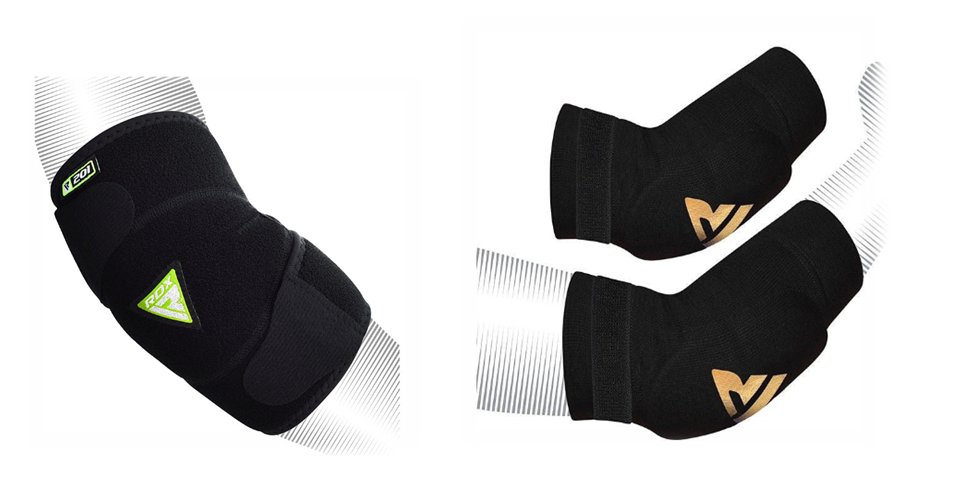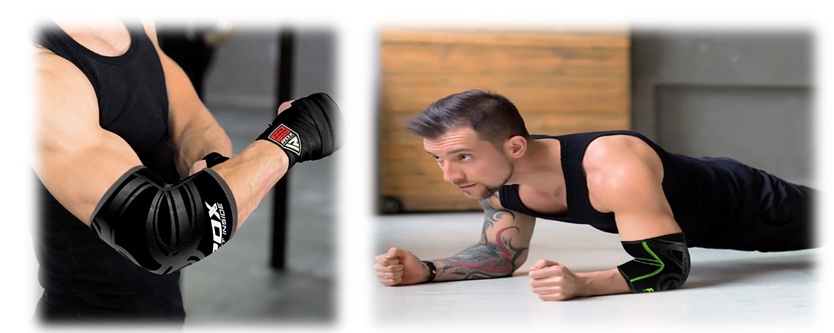At the crux of every physical activity lies the foundation of proper support, especially when it comes to our joints. In this comprehensive guide, we delve into the significance of elbow support in various endeavours, from sports to daily tasks, shedding light on its role in preventing injuries, enhancing performance, and promoting overall well-being.
The Anatomy of the Elbow:
Before we embark on discussing the importance of elbow support, it's imperative to understand the intricate anatomy of this crucial joint. The elbow comprises three main bones: the humours, radius, and ulna, along with an array of ligaments, tendons, and muscles. This complex structure allows for the articulation of the arm, facilitating movements such as flexion, extension, and rotation.
Some common types of elbow support:
- Elbow Sleeves:
- Elbow sleeves are snug-fitting garments typically made of neoprene or similar elastic materials.
- They provide compression to the elbow joint, promoting blood flow and reducing inflammation.
- Elbow sleeves are suitable for various activities, including weightlifting, basketball, and tennis, offering mild to moderate support.
- Elbow Braces:
- Elbow braces are supportive devices designed to stabilize and protect the elbow joint.
- They often feature adjustable straps or hinges to customize the level of support and accommodate different degrees of movement.
- Elbow braces are commonly used in sports rehabilitation or to prevent injuries during high-impact activities.
- Tennis Elbow Straps:
- Tennis elbow straps, also known as counterforce braces, target specific conditions like lateral (tennis elbow).
- These straps apply pressure to the forearm muscles, redistributing forces away from the injured tendon attachment point on the elbow.
- Tennis elbow straps are effective in relieving pain and promoting healing for individuals suffering from overuse injuries.
- Compression Bands:
- Compression bands or wraps are elastic bands that encircle the forearm, exerting pressure on the muscles and tendons around the elbow.
- They help reduce swelling, improve circulation, and provide support during activities that strain the elbow joint.
- Compression bands are often used in combination with other forms of support for added reinforcement.
- Elbow Pads:
- Elbow pads are protective gear commonly worn in sports such as skating, skateboarding, or cycling.
- They consist of cushioned padding encased in a durable shell, designed to absorb impact and prevent abrasions or contusions on the elbow.
- Elbow pads are essential for athletes engaging in high-risk activities where falls or collisions are common.
- Custom-Made Orthotics:
- For individuals with specific anatomical considerations or medical conditions, custom-made orthotic devices may be prescribed.
- This orthotics is tailor-made to fit the individual's unique anatomy, providing targeted support and alignment correction.
- Custom-made orthotics offer unparalleled comfort and effectiveness, addressing the wearer's precise needs with precision.
The Role of Elbow Support in Sports:
Preventing Injuries:
In the realm of sports, where physical exertion is paramount, elbow support emerges as a vital component in injury prevention. Whether engaging in high-impact activities like basketball or repetitive motions in tennis, the elbow is susceptible to strains, sprains, and even fractures. Proper support, through the use of braces or sleeves, can mitigate these risks by stabilizing the joint and reducing undue stress.
Enhancing Performance:
Moreover, elbow support isn't merely about injury prevention; it also plays a pivotal role in enhancing athletic performance. By providing external reinforcement to the joint, support aids in maintaining proper alignment, optimizing muscle function, and minimizing fatigue. Athletes can thus push their limits with confidence, knowing that their elbows are adequately supported throughout rigorous training sessions and competitions.
The Importance of Elbow Support in Daily Activities:
Occupational Hazards:
Beyond the realm of sports, elbow support extends its benefits to various occupational settings where repetitive motions or prolonged periods of activity are commonplace. From construction workers to office professionals, individuals engaged in tasks requiring constant elbow movement are susceptible to conditions like tendonitis or bursitis. Here, the use of supportive aids can alleviate strain and discomfort, enabling individuals to perform their duties with greater comfort and efficiency.

Ergonomic Considerations:
Furthermore, in today's digital age, where hours spent typing or using handheld devices have become the norm, assumes even greater significance. Poor ergonomics, characterized by improper arm positioning and inadequate support, can lead to a myriad of musculoskeletal issues, including carpal tunnel syndrome and cubical tunnel syndrome. Investing in ergonomic accessories such as supportive pads or adjustable desks can significantly alleviate strain on the elbows, fostering a healthier and more productive work environment.
Choosing the Right Elbow Support:
- Assess Your Needs:
Begin by assessing your specific requirements and the intended use of the elbow support. Are you looking for support during sports activities, rehabilitation from an injury, or relief from chronic pain? Understanding your needs will guide you in selecting the most appropriate type of support.
- Consult a Healthcare Professional:
If you're unsure about the type of elbow support you need, it's advisable to consult with a healthcare professional or a sports medicine specialist. They can evaluate your condition, provide personalized recommendations, and suggest suitable options based on your individual circumstances.
- Consider the Level of Support:
Different activities and conditions may require varying levels of support. For example, mild strains or preventive measures may only necessitate a lightweight elbow sleeve, while more severe injuries or instability may require a rigid brace with adjustable straps for maximum support.
- Evaluate Comfort and Fit:
Comfort is paramount when choosing elbow support, as you'll likely be wearing it for extended periods. Look for products made from breathable, moisture-wicking materials to prevent discomfort from sweat build-up. Additionally, ensure the support fits snugly without being too tight or restrictive, allowing for natural movement and circulation.
- Review Features and Adjustability:
Pay attention to the features and adjustability options offered by different elbow support products. Adjustable straps, hinges, and customizable compression levels can enhance comfort and functionality, allowing you to tailor the support to your specific needs and preferences.
- Assess Durability and Quality:
Invest in elbow support products made from durable, high-quality materials that can withstand frequent use and provide long-lasting support. Check for reinforced stitching, sturdy closures, and durable padding to ensure the product maintains its effectiveness over time.
- Consider Activity-Specific Design:
Some elbow support products are specifically designed for certain activities or conditions. For example, tennis elbow straps are tailored to address lateral epicondylitis, while compression sleeves with silicone padding may offer additional protection during contact sports. Choose a product that aligns with your intended use to maximize its benefits.
- Read Reviews and Seek Recommendations:
Before making a purchase, read reviews from other users to gain insights into the performance, durability, and comfort of the elbow support products you're considering. Additionally, don't hesitate to seek recommendations from friends, family, or healthcare professionals who may have firsthand experience with certain brands or models.
- Trial and Adjustment:
Once you've selected an elbow support product, take the time to wear it and assess its comfort and effectiveness in real-world situations. Make any necessary adjustments to the fit or features to ensure optimal performance and comfort. If the support doesn't meet your expectations, don't hesitate to explore alternative options until you find the perfect fit.
Final thought:
In essence, elbow support serves as a cornerstone in both sports and daily activities, offering a myriad of benefits ranging from injury prevention to performance enhancement. By understanding the crucial role of proper support in maintaining elbow health, individuals can make informed decisions when selecting supportive aids, thereby safeguarding their well-being and optimizing their physical capabilities.


No comments yet